Mercury is our sun’s innermost planet. So it always lies near the sun in our sky. Mercury is now back in the west after sunset. It’ll reach its greatest elongation, its greatest apparent distance from the sun in our sky, on July 22, 2024. And in fact – on July 22 – Mercury will be farther from the sunset than it will be for all of 2024. It’s the best time all year to see Mercury from Earth’s Southern Hemisphere. Yet the planet is less than glorious from the northern half of the globe. To understand why, see the two charts below.

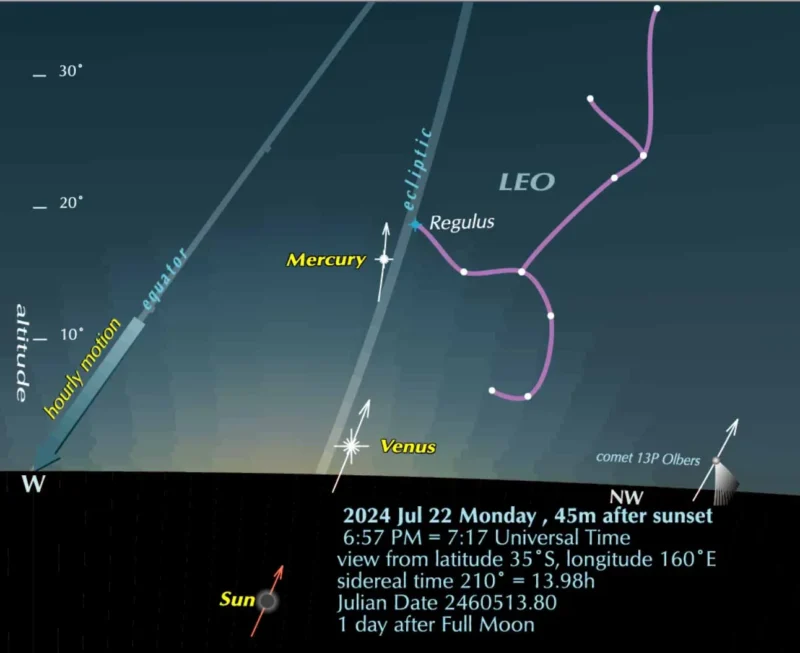
Mercury after sunset in July 2024
Where to look: Look west, in the sunset direction – shortly after sunset – for Mercury.
Greatest elongation: Mercury is farthest from the sun on our sky’s dome – and in fact farthest from the sun in the sky for all of 2024 – at 7 UTC (2 a.m. CDT) on July 22, 2024. At that time, Mercury will be 27 degrees from the sun in our sky. See A comparison of elongations, below.
Brightness: Mercury was bright when it emerged in the evening sky during the last week of June. At that time, it was shining at -0.6 magnitude. At greatest elongation, Mercury shines more faintly at magnitude 0.3. But it’ll be farther from the sunset glare then and still brighter than most stars! In the evenings after greatest elongation, the innermost planet will rapidly fade as it sweeps up from behind Earth, in orbit around the sun, causing its illuminated side, or day side, to turn away from us. It’ll disappear in early August 2024 and will reach inferior conjunction – when it passes between Earth and the sun – on August 19.
Through a telescope: Mercury will appear about 43% illuminated at greatest elongation. It’ll measure 7.8 arcseconds across.
Constellation: Mercury will lie in front of the constellation Leo the Lion at this elongation. Doubtless, most of the stars in this constellation will be lost in the twilight.
Note: As the innermost planet, Mercury is tied to the sun in our sky. As a result, it never ventures very far above the horizon after sunset. So as soon as the sun disappears below your horizon, your clock starts ticking. Will you see the glowing point of light that is Mercury before it drops below the horizon, following the setting sun? Note that this July 2024 apparition of the sun’s innermost planet will be at its best for the year for the Southern Hemisphere.
Mercury in 1 minute
The video below gives you a 1-minute synopsis of the evening elongation of Mercury in July 2024.
Venus is up there, too
Venus – the brightest planet – also passed behind the sun recently and has officially re-entered the evening sky. It, too, is easier to spot from Earth’s Southern Hemisphere than from its Northern Hemisphere, and for the same reasons as mentioned above: because the angle of the ecliptic, or path of the sun, moon and planets, is more favorable for Southern Hemisphere viewers. But Venus is much brighter than Mercury. Watch for it below Mercury in the western twilight. We’ve gotten only a few photographs of Venus so far from members of the EarthSky community. We present two below. The first is from Earth’s Northern Hemisphere, and the second is from Earth’s Southern Hemisphere.
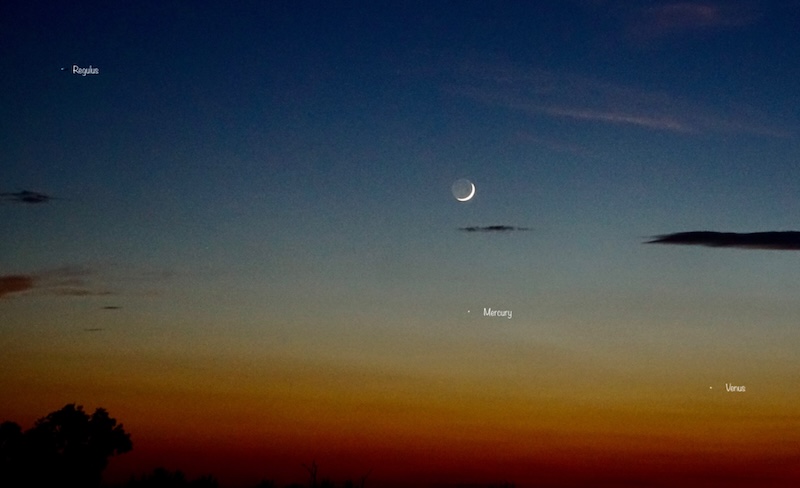
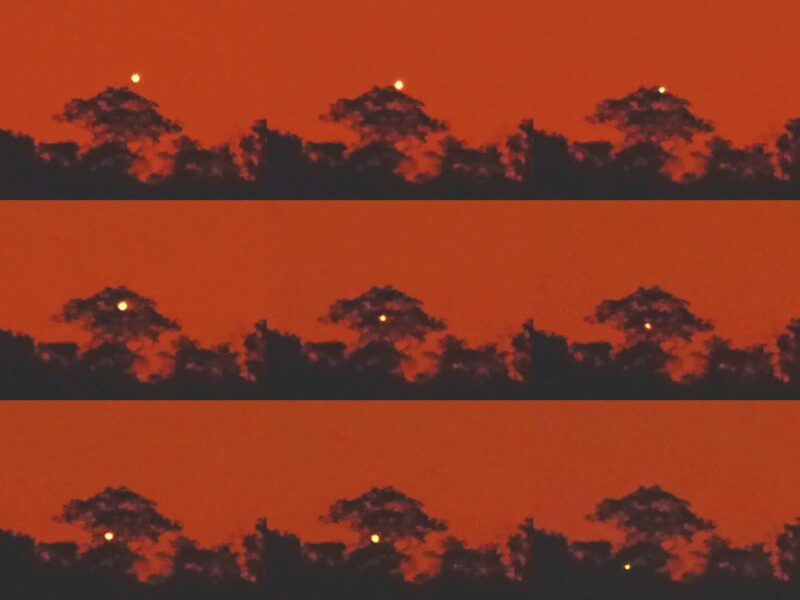
For precise sun and Mercury rising times at your location:
Old Farmer’s Almanac (U.S. and Canada)
timeanddate.com (worldwide)
Stellarium (online planetarium program)
Mercury events in 2024
Note: Times are in UTC
Jan 12, 2024: Greatest elongation (morning)
Feb 28, 2024: Superior conjunction (passes behind sun from Earth)
Mar 24, 2024: Greatest elongation (evening)
Apr 11, 2024: Inferior conjunction (races between Earth and sun)
May 9, 2024: Greatest elongation (morning)
Jun 14, 2024: Superior conjunction (passes behind sun from Earth)
Jul 22, 2024: Greatest elongation (evening)
Aug 19, 2024: Inferior conjunction (races between Earth and sun)
Sep 5, 2024: Greatest elongation (morning)
Sep 30, 2024: Superior conjunction (passes behind sun from Earth)
Nov 16, 2024: Greatest elongation (evening)
Dec 5, 2024: Inferior conjunction (races between Earth and sun)
Dec 25, 2024: Greatest elongation (morning)
Heliocentric view of Mercury July 2024
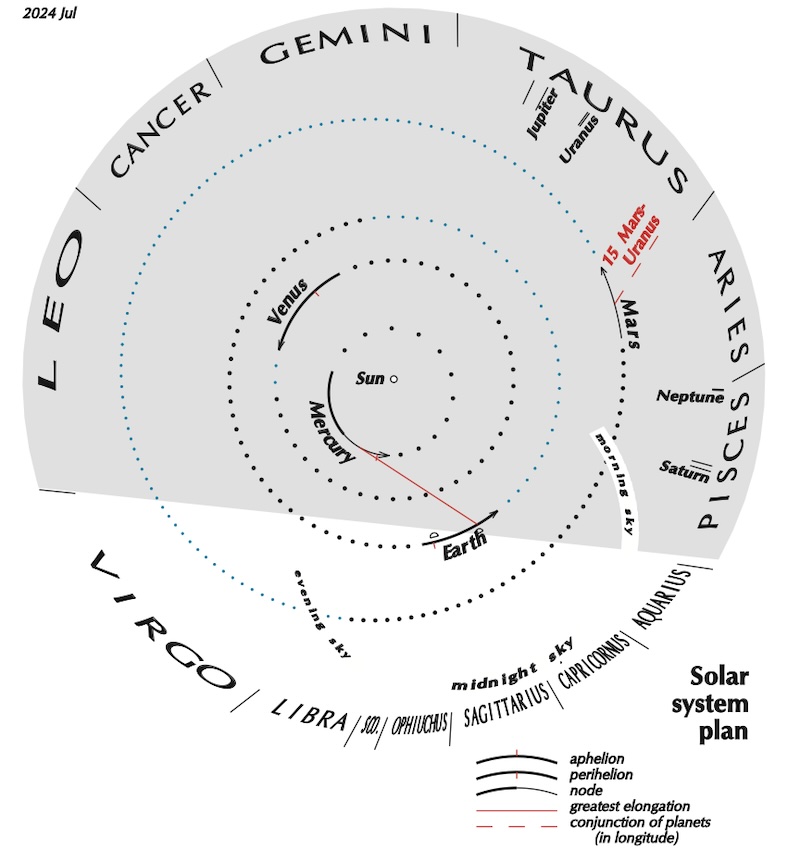
A comparison of elongations
In July 2024, Mercury stretches out a full 27 degrees from the sun in our sky. The farthest from the sun that Mercury can ever appear on the sky’s dome is about 28 degrees. And the least distance is around 18 degrees.
Mercury (and Venus) elongations are better or worse depending on the time of the year they occur. So in 2024, the Southern Hemisphere will have the best evening elongation of Mercury in July. And the Northern Hemisphere will have the best evening apparition in March.
In the autumn for either hemisphere, the ecliptic – or path of the sun, moon and planets – makes a narrow angle to the horizon in the evening. But it makes a steep slant, nearly perpendicular, in the morning. So, in autumn from either hemisphere, morning elongations of Mercury are best. That’s when Mercury appears higher above the horizon and farther from the glow of the sun. However, evening elongations in autumn are harder to see.
In the spring for either hemisphere, the situation reverses. The ecliptic and horizon meet at a sharper angle on spring evenings and a narrower angle on spring mornings. So, in springtime for either hemisphere, evening elongations of Mercury are best. Meanwhile, morning elongations in springtime are harder to see.
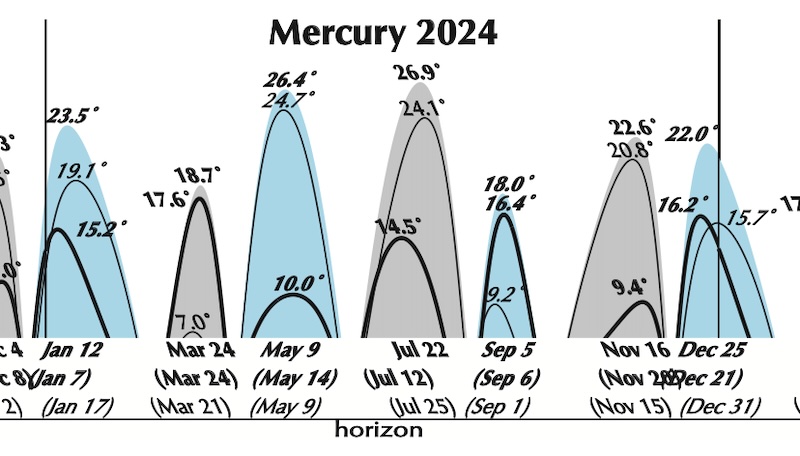
More Mercury evening elongation comparisons for 2024
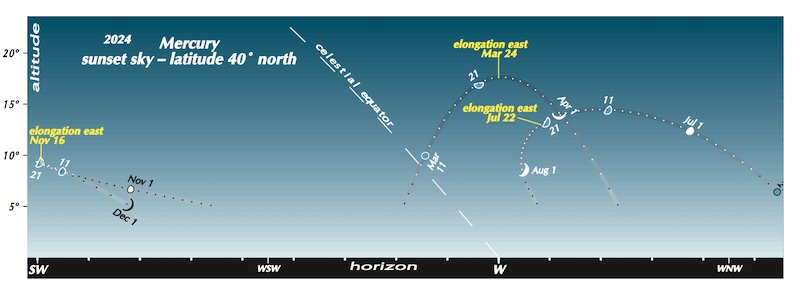
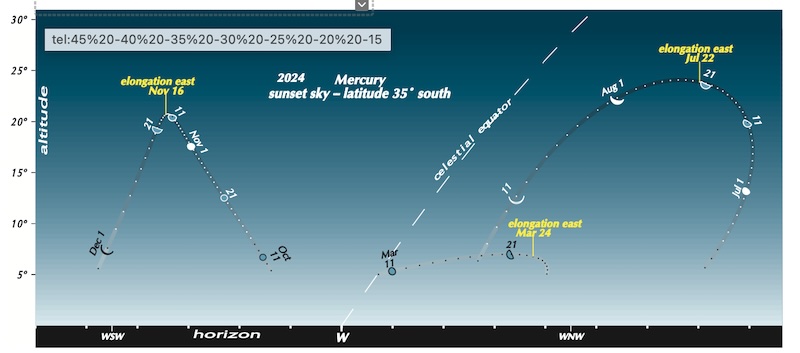
Mercury elongations

Bottom line: The sun’s innermost planet, Mercury, will stretch out a full 27 degrees from the sunset on July 22, 2024. That is nearly as far from the sunset as Mercury can be.
Submit your photos to EarthSky here.
Read about greatest elongations, superior and inferior conjunctions: Definitions for stargazers











